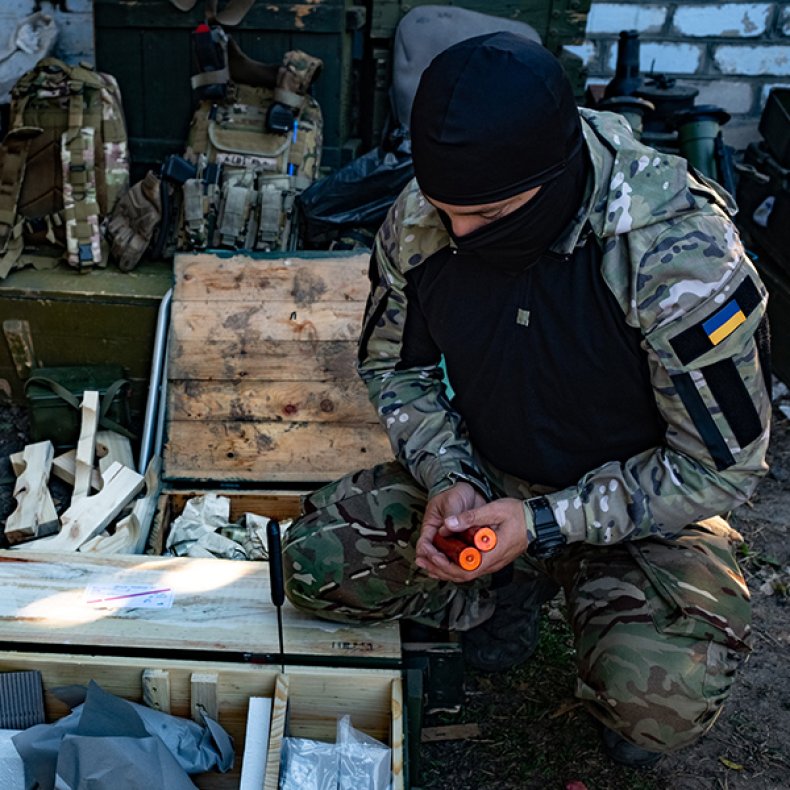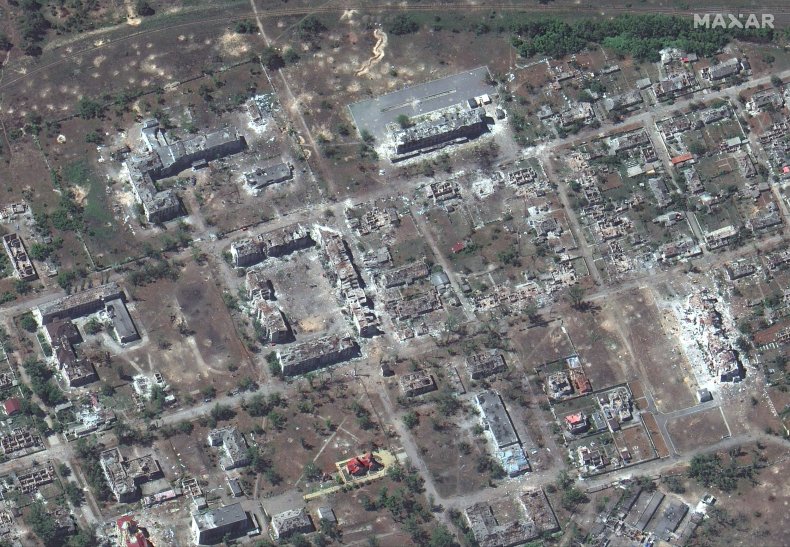MICHAEL WASIURA
As the counterattacking Ukrainian army draws ever closer to the Russian-occupied regional capital of Kherson, Russian forces have responded by moving officers and materiel to the opposite bank of the Dnieper River.
A Russian-led evacuation of civilians deeper into Russian-controlled territory is underway, local monuments to figures from Russian history have been removed to safety, and Kremlin-loyal occupation authorities are reportedly no longer present in Kherson city itself. However, far from making a clean retreat, Russia appears to be setting the stage for a prolonged urban battle, one that it is all but certain to lose.
While much of the Kherson region is located on the eastern "left" bank of the Dnieper, Kherson city itself sits on the western "right" bank. This right bank Russian bridgehead has become increasingly vulnerable as Ukrainian precision-guided artillery systems continue to disrupt the Russian logistical networks and to strike command posts. Most western military experts expect that Ukraine will succeed in clearing right bank Kherson of Russian forces by the end of the calendar year.
"Professional soldiers and those who appear to be from the Rosgvardia [an upper echelon Russian domestic police force] have been quite actively leaving the territory [of right bank Kherson region]," Oleksandr Samoilenko, the Ukrainian head of the Kherson Regional Council, told Newsweek as part of a video briefing held at the Ukraine Media Center in Odesa.
"They are being replaced with troops who were recently mobilized in the Russian Federation: people who are poorly motivated, who don't know why they are there, and who are looting everything they can," he added. "There are essentially no professional military there to organize defensive efforts."
 A Ukrainian special forces soldier in the Mykolaiv region prepares for a mission in the Kherson direction on September 24, 2022. In August, Ukraine began counteroffensive operations against Russian occupation forces in the south of the country. Russia has occupied Kherson since early March.GLOBAL IMAGES UKRAINE VIA GETTY IMAGES/YANA SIDASH
A Ukrainian special forces soldier in the Mykolaiv region prepares for a mission in the Kherson direction on September 24, 2022. In August, Ukraine began counteroffensive operations against Russian occupation forces in the south of the country. Russia has occupied Kherson since early March.GLOBAL IMAGES UKRAINE VIA GETTY IMAGES/YANA SIDASHSwapping out experienced units in favor of fresh conscripts devoid of competent officers may not sound like a winning military strategy, but if Russia's goal is to create as much havoc as possible for approaching Ukrainian troops and pro-Ukrainian civilians alike, it is a formula that may well succeed in meeting its limited objectives.
"Putin is trying to create the illusion that he is protecting the city," Samoilenko explained, "but it looks more like he is actually preparing to present these newly mobilized troops as martyrs who died in defense of the Russian Federation."
In recent days, Newsweek spoke with five former residents of Kherson region, all of whom fled abroad in the early months of the war and remain in contact with friends and family still living under occupation back home. These former residents hail from a variety of places within the region, including the capital city. While the individual details of their stories could not be independently verified, the Kherson natives' individual accounts all largely overlapped.
On the western bank of the river, frontline towns north of Kherson city have been largely destroyed. While many residents fled in the weeks immediately after their homes fell under occupation in early March, Russia's recent attempts to further evacuate such places have not met with success. Despite sending three buses to one such village, only a handful of residents elected to leave. Most remain in what is left of their homes in the hope that Ukrainian troops will soon liberate them.
In Kherson city, however, the population has thinned more significantly. Residents who received Russian passports following Moscow's unrecognized annexation of the territory in late September have largely left. Many were not permitted to cross the river using their own cars, and were instead placed on buses, which often acted as cover for armored vehicles that were also being transported to safety. Military-aged men among the evacuees were "strongly encouraged" to enlist with Russian forces.
The streets of Kherson city, the regional capital, are now full of "fresh-faced" Russian soldiers who "look like they don't know how to fight," according to one former resident of the urban center. These troops are more poorly equipped than the Russians who could be seen patrolling residential neighborhoods up until a few weeks ago, and the new arrivals are known to confirm their unfamiliarity with the area by asking locals where they can obtain moonshine. Locals say that these troops have taken up residence in abandoned school buildings and kindergartens, as well as in the basement of at least one still-functioning hospital.
On both banks of the river, Chechen fighters from special battalions under the control of Ramzan Kadyrov are also visible. There is a widespread expectation among residents on the ground that, when the battle reaches the outskirts of Kherson city, these irregular troops will be used as "barrier squads," preventing newly mobilized Russians from retreating or from peaceably surrendering to advancing Ukrainian units.
 Satellite imagery published by Maxar Technologies on June 7, 2022, shows damage to Rubizhne, a small town in the eastern Ukrainian Donbas region. As Ukraine's counteroffensive efforts to liberate territory in the Kherson region move forward, similar damage is being done to settlements in the south of the country.
Satellite imagery published by Maxar Technologies on June 7, 2022, shows damage to Rubizhne, a small town in the eastern Ukrainian Donbas region. As Ukraine's counteroffensive efforts to liberate territory in the Kherson region move forward, similar damage is being done to settlements in the south of the country.Russia has also reportedly placed mobile artillery systems in residential areas, mainly on the left bank opposite the city itself and well within range of the regional capital's key elements of civilian infrastructure.
"The Russians are going to leave behind nothing but dust," one former resident predicted. "The only question I have is whether it will be worse than Mariupol, or only as bad as Mariupol."
On Saturday, October 22, Russian forces cut the cable that provided internet service to the Kherson region. While this move was interpreted in some circles as a Kremlin attempt to prevent evidence of its retreat from becoming public, it appears increasingly clear that the information blackout was implemented in order to prevent residents from producing open source intelligence about Russia's preparations for urban warfare.
At present, the only way for Kherson residents to reach the outside world is by using Russian telecoms networks. Locals, fearful that their communications are being monitored, have generally stopped sharing any details beyond the vague assurance that they are still alive.
Still, there remains every indication that Russia's position on the right bank of the Dnieper River is militarily untenable. While the withdrawal of armored vehicles and experienced Russian units from the areas north of the regional capital do not mean that the city will be liberated immediately, it does suggest that a Ukrainian operational success there is imminent.
"You can't actually defend anything at the point where the object you're defending is physically located," George Barros of the Institute for the Study of War told Newsweek. "The effective range of Ukrainian tube artillery is approximately 25 kilometers, and so once the lines move within that distance of the city, Ukraine has effectively won."
"After that, it's just a question of what happens to the Russian troops in the city," he added, "and what happens to the physical infrastructure."
While the Russian retrenchment in and around the city of Kherson serves no clear military purpose, it all but ensures several more weeks of death and destruction for local civilians, Ukrainian soldiers, and for Russian forces themselves.
No comments:
Post a Comment